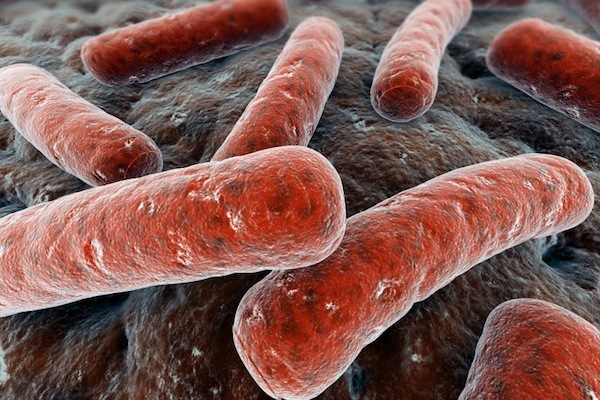In the lab, scientists coax E. coli to resist radiation damage

Scientists have found a way to make E. coli bacteria resist ionizing radiation, a finding that has implications for better understanding how organisms can avoid radiation damage.
Illustration: iStockphoto
Capitalizing on the ability of an organism to evolve in response to punishment from a hostile environment, scientists have coaxed the model bacterium Escherichia coli to dramatically resist ionizing radiation and, in the process, reveal the genetic mechanisms that make the feat possible.
The study, published in the online journal eLife, provides evidence that just a handful of genetic mutations give E. coli the capacity to withstand doses of radiation that would otherwise doom the microbe. The findings are important because they have implications for better understanding how organisms can resist radiation damage to cells and repair damaged DNA.
“What our work shows is that the repair systems can adapt and those adaptations contribute a lot to radiation resistance,” says University of Wisconsin–Madison biochemistry Professor Michael Cox, the senior author of the eLife report.

Michael Cox
In previous work, Cox and his group, working with John R. Battista, a professor of biological sciences at Louisiana State University, showed that E. coli could evolve to resist ionizing radiation by exposing cultures of the bacterium to the highly radioactive isotope cobalt-60. “We blasted the cultures until 99 percent of the bacteria were dead. Then we’d grow up the survivors and blast them again. We did that twenty times,” explains Cox.
The result were E. coli capable of enduring as much as four orders of magnitude more ionizing radiation, making them similar to Deinococcus radiodurans, a desert-dwelling bacterium found in the 1950s to be remarkably resistant to radiation. That bacterium is capable of surviving more than one thousand times the radiation dose that would kill a human. “Deinococcus evolved mainly to survive desiccation, not radiation,” Cox says, “so when conditions are right, it can repair damage very quickly and start growing again.”
Understanding the molecular machinery that allows some organisms to survive what would otherwise be lethal doses of radiation is important because the same bacterial machinery that repairs DNA and protects cells in microbes exists in humans and other organisms. Although turning the new findings into application is in the distant future, the results could ultimately contribute designer microbes capable of helping clean radioactive waste sites or making probiotics that could aid patients undergoing radiation therapy for some cancers.
The results could ultimately contribute designer microbes capable of helping clean radioactive waste sites or making probiotics that could aid patients undergoing radiation therapy for some cancers.
The new study demonstrates that organisms can actively repair genetic damage from ionizing radiation. Prior to the new work, scientists thought the ability of cells to resist radiation stemmed primarily from their ability to detoxify the reactive oxygen molecules created by radiation within cells.
That passive detoxification approach, notes Cox, is most likely working in tandem with active mechanisms such as the mutations found by the Wisconsin group as well as other, yet-to-be-discovered mechanisms.
“This extreme resistance we’re looking at is a complicated phenotype,” says Cox. “There are likely additional mechanisms buried in this data and we’re working to pull those out.”




